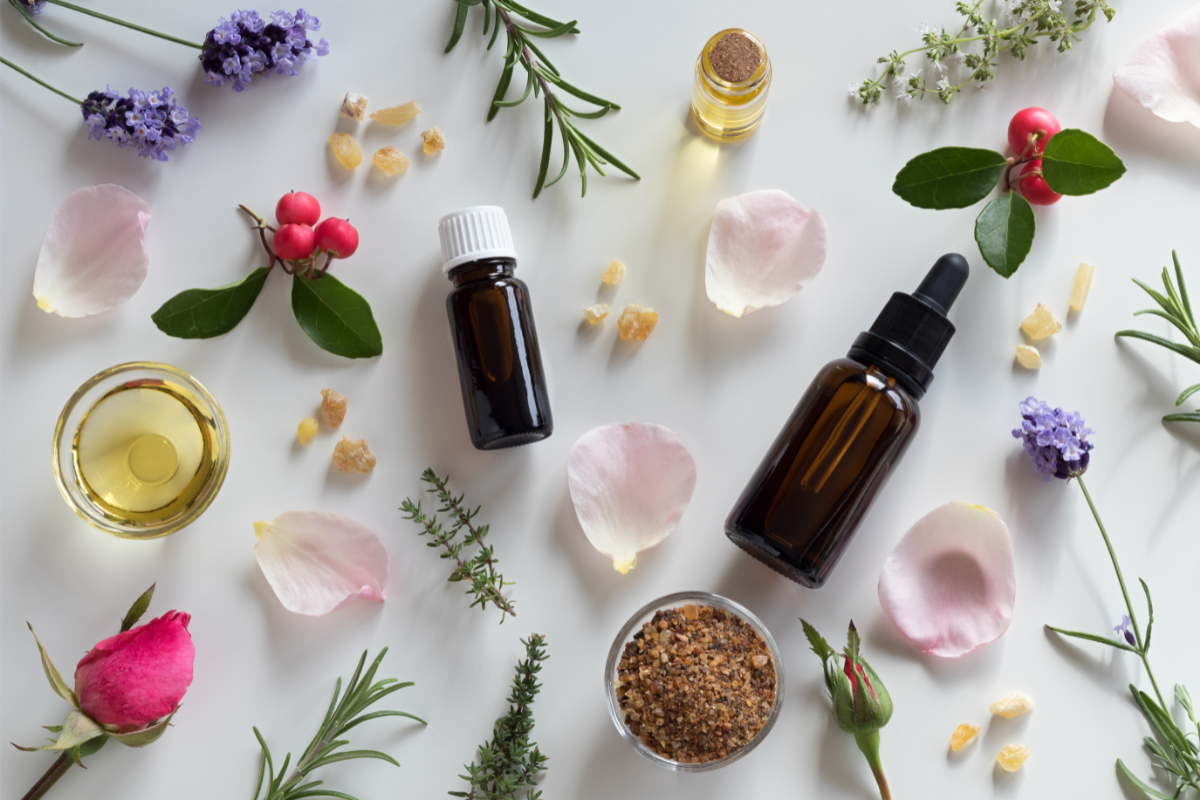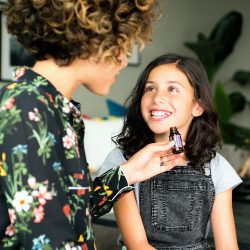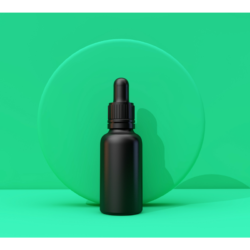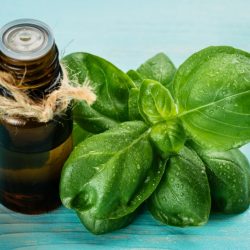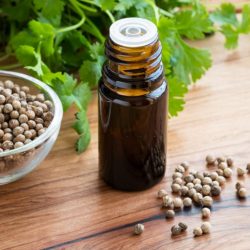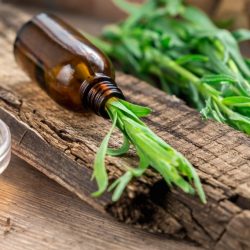Aromatherapy is a specialised branch of phytotherapy. It is the use of essential oils for therapeutic purposes. The term ” Aromatherapy ” was coined in 1928 by a French perfumer and chemist by the name of René-Maurice Gattefossé. Aromatherapy is based on an in-depth understanding of essential oils, their chemical components and their interactions with the human body. These oils are extracted from various parts of plants, including leaves, flowers, bark, roots and seeds. Each of these oils can have specific properties, ranging from relaxing to antibacterial to anti-inflammatory.
What is aromatherapy?
Aromatherapy, an ancient therapeutic discipline, is based on the use of essential oils extracted from plants to promote health and well-being. These oils, which are concentrates of natural aromatic compounds, are used for their beneficial physiological and psychological properties. Aromatherapy combines the science of plants with an understanding of the chemistry of fragrance. It is used to treat a range of ailments, from anxiety and stress to skin and respiratory disorders. It is part of a holistic approach to health, integrating the body and mind in the healing process.
What is its history?
Aromatherapy, whose origins date back to India, China and the Mediterranean basin, has evolved over the centuries. In the fifteenth century, European apothecaries, known as Aromaterii, began using essential oils.
Modern medicine took an interest in aromatherapy in 1887 with Chamberland. In 1928, René-Maurice Gattefossé, considered to be the father of modern aromatherapy, introduced the term “aromatherapy”. The work of J. Valnet, Lapraz, Durafour and Belaiche in the 1960s and the concept of the chemotype proposed by P. Franchomme in 1970 furthered our understanding of essential oils.
The history of aromatherapy, which shared some common ground with phytotherapy until the sixteenth century, is characterised by the distillation and extraction of oils, practised in Egypt, China and India. The Greeks and Romans also used these aromatic extracts, as reported by Dioscorides in the first century. The alembic, invented by the Persian alchemist physician Jabir ibn Hayyan in the tenth century, marked a significant advance in the extraction of essential oils.
In the nineteenth century, the classification of the active principles of fragrant molecules enabled more targeted use. Gattefossé, after a personal experiment with true lavender essential oil in 1910, published a fundamental work on aromatherapy in 1931. From 1929 to 1931, the pharmacist Sevelinge studied the relationship between the chemical structure and therapeutic activity of essential oils.
In the United Kingdom, aromatherapy became associated with aromachology, thanks in particular to Marguerite Maury in the 1960s. In 1964, Jean Valnet published “Aromathérapie, Traitement des maladies par les essences des plantes”, a reference work. Pierre Franchomme and Dr Daniel Pénoël furthered our understanding of essential oils with their concepts of scientific aromatherapy and chemotype.
At the end of the twentieth century, advances in analytical methods, particularly chromatography, led to a better understanding of aromatic compounds. This led to the refinement of their prescription in medicine.
What is aromatherapy?
Aromatherapy uses essential oils extracted from plants for medical purposes. It is sometimes perceived as a pseudo-medicine. However, in France it is also recommended in certain national health plans. It is used, for example, to combat hospital-acquired infections and the undesirable effects of chemotherapy. Originally based on a traditional approach, aromatherapy is now considered to be a branch of phytotherapy. In some cases, it is referred to as a pseudoscience, due to a lack of evidence of effectiveness.
The effectiveness of aromatherapy against certain infections and headaches has been scientifically proven. On the other hand, it does not appear to relieve menstrual or childbirth-related pain. The complexity of its effects can be explained by the diversity of essential oils. Their composition varies according to a number of factors, including the soil and the season. Interactions between oils and with other products also complicate their study.
René-Maurice Gattefossé introduced the term “aromatherapy” in 1935. It combines “aroma” for “aroma” and “therapeia” for “care”. Aromatherapy is often associated with phytotherapy, and specialists sometimes use the term “phyto-aromatherapy”.
Essential oils can be applied in a variety of ways, including as unctions, creams, lotions, orally, in capsules, in aerosols or diffused into the air. The use of suppositories is more specific and often reserved for the medical profession.
Essential oils are commonly used for self-medication, particularly to treat common ailments. Aromatherapy is much more than simply diffusing pleasant scents; it is a complex approach to treatment, using the essences of aromatic plants, citrus fruits, resins or woods. These essences, known as essential oils, have been used around the world for thousands of years. Aromatherapy uses these oils for therapeutic purposes.
What is an essential oil?
The European Pharmacopoeia describes essential oils as complex aromatic substances extracted from specific plants by steam distillation, dry distillation or mechanical methods without heating. Used in pharmacies, they allow for personalised medical advice and an interdisciplinary approach to care. Depending on the therapeutic objectives, the dosages and frequency of administration of essential oils vary, offering preventive or curative regimes.
Plant essences, present in small quantities (1-3%) in plants, play a crucial role in their immunity, energy and protection against predators or pathogens. Essential oils are mainly obtained by steam distillation of aromatic plants such as lavender or peppermint. This method releases the plants’ volatile compounds, which are then condensed into a concentrated liquid.
There are two main extraction methods: mechanical expression for citrus peel, and distillation for aromatic plants.
Essential oils, made up of active aromatic molecules, are extracted from different parts of the plant and regulated according to their use (cosmetics, biocides, medicines). Their classification as medicines depends on their therapeutic and pharmacological properties. They can also be used as excipients in medicines, as magistral preparations or in pure form.
The concept of chemotype in aromatherapy refers to a chemical entity specific to a plant species, varying according to geographical origin. This distinction helps to understand the variations in the chemical composition of essential oils and their therapeutic properties.
Physically, essential oils are liquid at room temperature, non-greasy, less dense than water, and soluble in alcohol and certain solvents. Their chemical complexity, made up of hundreds of constituents, plays a key role in their therapeutic effects. The aromatogram analyses the correlation between their biochemical structure and their effectiveness. These oils have many different properties.
Role of the emunctories in aromatherapy
When applied to the skin, essential oils pass through the pores of the skin and enter the blood capillaries. These guide them to the target organ. In this way, they have a deep effect throughout the body. Once they have been absorbed, the emunctories are responsible for eliminating them.
The emunctories are the organs responsible for eliminating toxins
- The lungs via sputum or mucus
- The skin via sebum and perspiration
- The kidneys via urine and the intestine via faeces
It is therefore essential to use quality essential oils:
- 100% pure and natural
- Of controlled origin and chemotype
- Always use them diluted and in low doses
- Not deterpenated
- With an EOBBD designation (which means that the Essential Oil is Botanically and Biochemically Defined)
- Store in good conditions (tightly closed bottle protected from light)
Most essential oils need to be diluted 1:5 (high concentration, reserved for medical use), more often 1:10 or even 1:20 or 1:100 (low concentration, common for the use of aromatherapy in cosmetology. However, we advise against mixing more than 3 E.O.s in the same preparation.
Regulatory framework and precautions
The regulatory framework for essential oils is crucial to their safe and effective use. This framework defines quality, purity and labelling standards, and varies according to the intended use of the oils, whether therapeutic, cosmetic or food. It imposes strict controls to avoid the risks associated with self-medication and to guarantee consumer protection. In France, for example, certain essential oils are regulated by health bodies, and their sale is sometimes restricted to pharmacies. The regulations also aim to prevent misleading advertising and to ensure clear and accurate product information. This introduction explores the different facets of essential oil regulation and their impact on public health.
What are the legislative and training obligations?
The sale of essential oils is regulated differently depending on their intended use, requiring a clear distinction between therapeutic and cosmetic use. We strongly advise against using oils purchased in perfume or cosmetics shops for culinary purposes or self-medication, because of the risks associated with their composition.
Jean-Pierre Willem, a doctor and aromatherapist, warns against self-medication, citing the potential danger even in small quantities. In France, companies have been fined for misleading consumers about the properties of certain oils.
As far as teaching and training in aromatherapy are concerned, the range of courses on offer is varied and heterogeneous in 2018. Specialised university degrees are rare, while other training courses are offered by private bodies, often with a potential conflict of interest and unsupported scientific evidence. In addition, there are many popularised works, but their reliability is often questionable.
In economic terms, aromatherapy accounts for around 2% of the global trade in essential oils, dominated by the food and cosmetics industries. In France, the pharmacy market grew significantly between 2012 and 2016.
The controversies surrounding aromatherapy mainly concern its therapeutic indications, efficacy and administration methods. In France, legislation on the practice of aromatherapy is not very restrictive, allowing anyone to declare themselves an aromatherapist without any specific training.
Certain essential oils are regulated and reserved for dispensing in pharmacies, due to their chemical composition and potentially dangerous properties. French legislation includes decrees and laws specifically regulating the distribution of certain essential oils. Law no. 84-534 of 30 June 1984, supplemented by the decree of 23 June 1986, regulates the dispensing of 8 specific essential oils. A decree dated 3 August 2007 extended this list to 15 essential oils. These are mainly essential oils rich in thujone and pinocamphone.
A few precautions in aromatherapy
As a general rule, it is unwise to use essential oils on pregnant or breast-feeding women, especially during the first three months of pregnancy when foetal tissue is forming, as well as on children because of their enzymatic immaturity.Aromatherapy needs to be particularly adapted for farm animals and pets, as some species lack certain enzymatic metabolism systems.
Some essential oils can be toxic and dangerous if the precautions for use are not taken. It is therefore advisable to turn to homeopathy, phytotherapy or hydrolatherapy (floral waters) for pregnant or breast-feeding women, as well as for children.
It is not advisable to take essential oils orally as a matter of course, despite certain preconceived ideas. Some essential oils can be toxic and dangerous for the liver, kidneys, digestive system and nervous system. If in doubt, opt for skin application or the respiratory route(inhalation, olfaction, diffusion).
Essential oils must be used with the utmost care. Avoid injecting them. With certain exceptions, oils should never be applied undiluted to the eyes or mucous membranes. Avoid using them in bath water and do not expose them to the sun. In the event of allergies, carry out a skin test. Always check the method of administration and dosage. If accidentally swallowed, contact a poison control centre and use vegetable oil to dilute. For skin or eye irritations, apply a vegetable oil immediately. Peppermint can be taken orally quickly, but it is prohibited for certain populations and not recommended for people with gastric problems. Peppermint should be avoided by asthmatics.
How to store essential oils
An essential oil should be kept in a tinted bottle, away from heat and light, with the head upwards and tightly closed (to avoid denaturing the molecules), generally for 5 years. However, the shelf life of an essential oil may vary depending on its content:
- Citrus families(citrus) → Bergamot, lemon, mandarin, etc. considered light essential oils, they can be kept for up to 1 year in good conditions.
- Phenol-rich oils→ Savory, oregano, clove, cinnamon, etc. considered heavy essential oils, they can be kept for up to 5 years in good conditions.
To preserve essential oils, it is essential to keep them out of the reach of children and store them upright. They should be kept away from light, ideally in coloured or aluminium bottles, in a cupboard. They should be stored at between 5 and 35 degrees Celsius. The shelf life is generally 5 years for essential oils and 3 years for essences. It is important to take into account the specific contraindications of certain oils and to consult a health professional for personalised advice.
How can I recognise a potentially dangerous essential oil in aromatherapy?
There’s one essential thing you need to know: an essential oil is a liquid, concentrated and complex aromatic plant extract obtained by steam distillation of aromatic plants or plant organs (flower, leaf, wood, root, bark, fruit, etc.). It is the distilled essence of the aromatic plant. As a result, they concentrate active molecules, some of whose biochemical families should be used with care:
Essential oils rich in phenols (phenic acids), aldehydes and terpenes
Such as lemon litsea, thyme and thymol, ylang-ylang, etc. These oils are potentially dangerous because they are dermocaustic, allergenic and irritating to mucous membranes and the skin. They are potentially dangerous because in their pure state they can cause burns, irritation and even skin necrosis. That’s why it’s essential to always dilute them no more than 20% in a fatty substance (vegetable oil, vegetable butter, etc.).
Essential Oils with Phenols contain notable compounds such as Thymol, Carvacrol and Eugenol. These compounds are known for their high skin irritant potential, which can lead to burns if used without adequate dilution. Examples of EOs in this category include Thyme ct thymol, Savory, Oregano compact and Clove.
Aromatic aldehydes, with Cinamaldehyde as a notable compound, present a high risk of skin and mucous membrane irritation. Their use requires careful dilution. Cinnamon (leaves and bark) are examples of EOs in this category.
Terpene Aldehydes, which contain notable compounds such as Citrals and Citronnellal, are considered to be moderately irritating to the skin and irritating to mucous membranes. These compounds are found in essential oils such as Verbena, Lemon Eucalyptus, Citronella, Lemon Lime and Lemon Balm.
These essential oils may also be hepatotoxic. Liver toxicity is a major concern when they are administered orally. Phenols, in particular, are associated with this risk. It is recommended that they be taken orally with caution, in a dosage limited to 1 drop 3 times a day, not exceeding 500 mg per day, and for a maximum of 3 weeks. Some experts suggest using a liver-protecting essential oil, such as Lemon or Rosemary Verbenone.
Essential oils rich in coumarins
These include parsley, angelica, celery, bergamot, bitter orange, etc. These oils are potentially dangerous because they are generally photosensitising to the skin. This means that they can increase the skin’s sensitivity to solar radiation, particularly ultraviolet rays. This sensitivity generally results in a skin rash. This reaction to the sun is thought to cause mutations in the epidermis that can lead to skin cancer. This is why it is essential to apply a photosensitising essential oil around 6 hours before exposure to the sun. Preferably in the evening at bedtime, for example. In the event of a burn caused by an essential oil, avoid getting water on it. Dilute immediately with vegetable oil!
Exposure to ultraviolet rays, whether from the sun or artificial sources, can cause adverse reactions when certain essential oils are used on the skin or ingested orally, mainly due to the presence of furocoumarins.
Essential oils containing furocoumarins include the zests of citrus fruits such as Lemon, Orange, Grapefruit and Mandarin, as well as Bergamot, which is particularly rich in Bergapten, a furocoumarin. Apiaceae, such as Angelica, Khella and Cumin, are also concerned.
To minimise the risks, it is essential to avoid direct exposure to the sun or UV rays for at least 6 hours after skin application or oral ingestion of an essential oil containing furocoumarins. It is advisable to avoid exposure to the sun or sources of UV radiation during the risk period. These precautions are essential to prevent adverse skin reactions linked to the photosensitivity of these essential oils.
Essential oils rich in lactones and ketones
Such as peppermint, lavender aspic, rosemary ct verbenone, mugwort, etc. are potentially dangerous. These oils are potentially dangerous. The wrong dosage of these oils can cause neurological toxicity. Some may also be abortifacient (risk of miscarriage), depending on the level of ketone they contain.
Some essential oils (EO) may present an allergenic risk, which varies according to the patient’s individual sensitivity. Some compounds, particularly sesquiterpene lactones, are known to have allergenic potential. It is essential to carry out a skin test before applying these EOs to the skin in order to assess the individual’s reaction.
EOs containing sesquiterpene lactones, such as Noble Laurel, Annual Mugwort and Sweet Flag, require special precautions. A skin test is recommended before any topical application of these EOs.
Peppermint presents specific risks, and should not be used by children under the age of 12 due to the risk of bronchospasm. It is also not recommended for people with asthma or epilepsy, and its use on the skin is limited.
Some EOs can have toxic neurological effects and abortive effects. This applies in particular to those containing specific ketones, recognisable by their “one” suffix. These EOs are contraindicated for pregnant and breast-feeding women, infants and children under 6, people with a history of epilepsy, the elderly and when administered orally. It is essential to take specific precautions to avoid the risks associated with these EOs.
Essential oils rich in sesquiterpenols and sesquiterpenes
Essential oils rich in sesquiterpenols and sesquiterpenes, such as cypress, sage, niaouli, carrot, etc., are potentially dangerous. These oils are potentially dangerous. In fact, they are what are known as oestrogen-like oils, meaning that they stimulate the female hormones that act on the urogenital system, the mammary gland, the skeleton, the cardiovascular system, the brain, the digestive system, the skin and the mucous membranes. They are therefore contraindicated in cases of hormone-dependent cancers, mastoses, fibrosis, prostate cancer or a history of hormone-dependent cancers.
What is a hydrolate in aromatherapy?
A hydrolat is a water of distillation or floral water obtained by steam distillation of an aromatic or medicinal plant to obtain an essential oil. During the distillation process in the still, the aromatic molecules of the distilled raw materials are entrained with steam. These are condensed and recovered in a decanter. The distillate obtained is made up of the supernatant essential oil and the water of distillation. A tiny part of the essential oil is solubilised in this floral water.
A hydrosol is not as powerful as an essential oil, but because it is made up of water (floral water), it retains water-soluble odour molecules and remains lightly scented, with certain therapeutic properties, such as orange blossom water used to regulate children’s sleep.
A hydrosol is preferable to an essential oil for use in cooked dishes. Hydrosols are also preferable to essential oils when treating babies, children, pregnant women or sensitive individuals. This preference also applies to pets such as cats.
Hydrolats are best kept at the bottom of the fridge for up to 2 months after opening. The shelf life can be extended by a few weeks by adding an antibacterial agent.
Aromatherapy is certainly a natural medicine, but it is far from being the alternative medicine it is usually described as. For aromatherapist Jean-Pierre Willem, “It’s not alternative medicine. It’s not possible to self-medicate”. Just one teaspoon of cedar essential oil, for example, can be enough to cause death. It’s best to avoid playing games with your health by mixing certain essential oils without knowing their molecular content and the appropriate doses.

